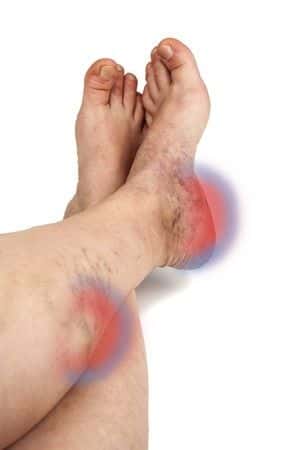General Surgery Expert Advises on Compartment Syndrome Post Surgery
Updated on
This case takes place in West Virginia and involves a 56-year-old male who presented with masses on both lower extremities: two masses on the right lower leg and one mass on the left lower leg. The defendant did not obtain a proper history nor did he perform a physical exam to test any sensory or motor deficits to elicit the details of the patient’s symptoms. The doctor told the patient he would perform surgery to remove the defects which he verbally diagnosed as lipomas. The plaintiff alleges this diagnosis was not consistent with his symptoms, given that he failed to investigate his symptoms further. During the surgery, he made incisions over the suspected lipomas, he found that the masses were actually muscle herniating through defects in the muscle fascia and proceeded to close three fascial defects. Immediately after surgery, the plaintiff experienced numbness in the left foot. He called the defendant on the night of the surgery and told him about the numbness and purple discoloration on the side of the foot. He denied that the symptoms he was experiencing could have been related to the procedure on his leg earlier that day. The plaintiff, knowing that the foot is directly dependent on the leg for blood and nerve supply, lost faith in the defendant. The doctor dismissed the patient’s complaints of pain and numbness at a post-operative visit and did not bother to document the complaints. The patient sought a second opinion at another facility regarding his increasing lower leg pain and foot numbness. He was seen by a PA-C who expressed concern about possible nerve damage and referred the patient to an orthopedic surgeon at the facility. The surgeon later evaluated the patient and scheduled him for surgery to release the fascia over the anterior and lateral left lower leg compartments the next day. At that time, the patient was correctly diagnosed with compartment syndrome and it was found that he had peroneal nerve impingement and nerve fibrosis due to the sutures that the defendant improperly placed all around and over the patient’s nerve. A similar procedure was performed on the Right leg. However, the patient suffers from permanent nerve damage and lives in chronic pain with significantly diminished quality of life. In addition to two reparative surgeries, he has undergone three nerve block procedures and will have to continue pain management procedures indefinitely. In failing to consult with another surgeon when discovering the fascial defects, and proceeding to close it, without consideration of differential diagnoses or the consequences of the “patch-and-go procedure,”the plaintiff alleges the doctor did not follow proper protocol. The plaintiff further alleges that by closing the fascial defects over the protruding muscle and nerves, the defendant worsened the already increased pressure within the lower leg compartments, thereby causing neurovascular damage to both of the patient’s lower legs.
Question(s) For Expert Witness
1. What would be the standard workup for a patient with the presenting symptoms as described in the case summary?
2. Have you ever had a patient develop the outcome described in the case?
3. Do you believe this patient may have had a better outcome if the defendant did not proceed with the alternative procedure by closing the three fascial defects?
Expert Witness Response E-001161
 The patient has a rare type of hernia called a tibialis anterior muscle hernia, or "shin/leg hernia" whereby a portion of muscle pushed through a fibrous band of the leg. Although the specific type of treatment is controversial, we do know that the defect should not be closed in order to prevent compartment syndrome. In these instances, the fibrous band is actually cut so the defect becomes larger, and this allows the muscle to retract back. Unfortunately, this was not done in this case. It seems like the surgeon made the wrong preoperative diagnosis, performed the wrong treatment after he determined what the cause of the bulges were, did not understand the common complications from such treatments, and did not thoroughly follow up on the patient's legitimate post-operative concerns. I am the director of our Hernia Center and have been fortunate not to have this outcome happen to me. Undoubtedly, the patient should not have had the surgery that was performed, because it was the wrong operation. It would have been better for him had the surgeon realized that he had a patient with a rare form of hernia and closed the skin to allow the patient to be transferred to a specialist. The fascial defect closure has been shown to lead to the complication that the plaintiff suffered from.
The patient has a rare type of hernia called a tibialis anterior muscle hernia, or "shin/leg hernia" whereby a portion of muscle pushed through a fibrous band of the leg. Although the specific type of treatment is controversial, we do know that the defect should not be closed in order to prevent compartment syndrome. In these instances, the fibrous band is actually cut so the defect becomes larger, and this allows the muscle to retract back. Unfortunately, this was not done in this case. It seems like the surgeon made the wrong preoperative diagnosis, performed the wrong treatment after he determined what the cause of the bulges were, did not understand the common complications from such treatments, and did not thoroughly follow up on the patient's legitimate post-operative concerns. I am the director of our Hernia Center and have been fortunate not to have this outcome happen to me. Undoubtedly, the patient should not have had the surgery that was performed, because it was the wrong operation. It would have been better for him had the surgeon realized that he had a patient with a rare form of hernia and closed the skin to allow the patient to be transferred to a specialist. The fascial defect closure has been shown to lead to the complication that the plaintiff suffered from.
About the author
Michael Morgenstern
Michael is Senior Vice President of Marketing at The Expert Institute. Michael oversees every aspect of The Expert Institute’s marketing strategy including SEO, PPC, marketing automation, email marketing, content development, analytics, and branding.
Subscribe to our newsletter
Join our newsletter to stay up to date on legal news, insights and product updates from Expert Institute.
Sign up nowFind an expert witness near you
What State is your case in?
Subscribe to our newsletter
Join our newsletter to stay up to date on legal news, insights and product updates from Expert Institute.



